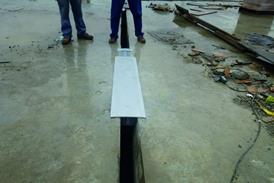We explore the human-side of digital construction

Digital construction needs people. The future will be digital, but it will still be dependent on people. Following on from the last article in this Building Academy course on Digital Construction where the task of producing a digital strategy was set, this post concentrates on delving deeper into the people aspect of the strategy. After all, this is the most important part; any program of change is reliant on people. While subsequent pieces will consider technology, data and workflow, the emphasis here is to understand the digital skills required now and, in the future, to develop your digital competency.
Before we explore specific digital skills, the purpose of this course has been to develop your digital competency over its duration. Competency is more than knowledge and skills; it also involves attitude. Developing your competency and learning how to improve, therefore involves each of these components. It is about learning content, the knowledge of a subject; secondly how to apply that knowledge, the skills; and finally appreciating the context of that knowledge from different perspectives. I believe a significant aspect of developing your digital competency is attitude and behaviour. In this regard, I like those companies that have adopted a mindset that encourages a digital-first or digital by default approach.
It has taken me some time to move beyond thinking of digital skills just about understanding how software applications work, but to a broader recognition of basic digital literacy and onwards to proficiency in data, security and communication. Many publications discuss digital skills; the primary sources used in the preparation of this post are Essential Digital Skills and the Digital Competency Wheel (digicomp). The following therefore provides a brief overview of the key categories of digital competence.
Information and data literacy: as highlighted in a previous post, the root cause of many of the construction industry’s problems in project delivery results from its inability to effectively manage information. This competency is about the ability to organise, analyse and evaluate information and support business functions and facilitate the decision-making process. How much time do you waste looking for a document or information? Technology providers are constantly developing; as an example, it has become increasingly easy to synchronise and share across individual devices. The wider challenge is to raise the capability across an organisation at the same time rather than the capability being concentrated within a small minority. Developing an understanding of this category is also the first step toward understanding how you can comply with the legal requirement to provide a golden thread of information.
Communication and collaboration: possibly the category that increased in prominence most significantly because of the pandemic, this focuses on the ability to communicate and collaborate in a virtual environment, including an understanding of the appropriate behaviours and language. In a wider context, it refers to the ability to use the many different platforms that information can now be used for communication, be it websites or social media. In construction, we have seen the growth of, for example, common data environments (CDE); however, CDEs are becoming too common; are additional challenges created when each project deploys a different application?
Digital content creation: we readily associate digital construction with BIM and with the digital models that are produced. It is appropriate to recognise that this category is about design model creation, however, it is also about other information creation and formats. How many of us believe we can use common applications like Word or Excel to the limit? Moreover, it is about the configuration of applications to share data (interoperability), how models can be amended in the future (asset information models), automation of processes and the ability to solve technical challenges. Hence, reference is made to the need for problem-solving skills, to help find solutions to using digital tools and online services.
Safety: the ability to stay safe and legal online. We should all appreciate the basic principle to use different and secure passwords for our online accounts. To a certain extent, this is becoming easier as many organisations require alternative forms of authentication that are improving security for their customers. Although organisations are slowly getting around to appreciating the value of their data and the importance of improving capabilities to remain safe and secure, often it is not thought about until an incident compromises security; in reality, it should be the first area any business focuses on.
This post has focused on the digital skills required to develop your digital competency. As part of your digital strategy, the suggestion is to include a section on people and here we have recommended four categories to concentrate on; data literacy, communication and collaboration, content creation and safety and security. The relevance here is to consider the digital skills of your current team, other key stakeholders as well as future recruits. Identifying gaps in your capability then provides clear actions for implementation.
Furthermore, the post referred to the importance of attitude. This point is picked up in the CIOB’s “Unlocking Construction’s Digital Future” where it recognises the need to have a flexible mindset in addition to understanding tools and data. A flexible mindset is described as one that is curious, can think critically and creatively, solve problems and adapt to a rapidly changing environment. How would you describe the mindset of your organisation? Is it fixed in thinking that it can not change, it does not have time or skills to develop? If you feel that developing your digital competency is confusing and you cannot see the wood for the trees, then maybe, think of this as the starting point and simply ask yourself, what is the mindset of the organisation?
As a final point, digital construction needs people. This post has focused on the digital skills required now and in the future. It has been relevant to emphasise here the skills that will be required, however, this is only part of the challenge for an organisation to transform towards its digital future. Another aspect of the people dynamic is the hearts and minds; without this, most transformations will fail. We will cover this aspect in the final part of the series.
In the next article, we will look at data. This will challenge you to determine the quality of your data, how well you leverage your data and how you manage the increasing gigabytes of data processed each year, as well as how prepared you are to effectively contribute to the golden thread of information on a project.
Until next time, keep working hard, be happy and have fun.




























No comments yet